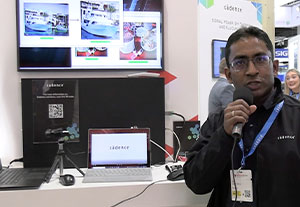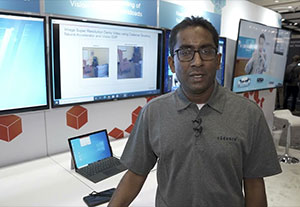Edge AI
What Is Edge AI?
The world is changing rapidly, with smart devices becoming increasingly common. For everything from smartwatches to autonomous driving and anomaly detection, real-time decision-making is often required without relying on the internet or cloud. Edge AI drives such applications and their ability to process data closer to the source of generation. Edge AI is the utilization of artificial intelligence (AI) data closer to its source. In other words, it is the implementation of artificial intelligence in an edge-computing environment. Edge AI relocates compute resources to collect and process the data locally. The localized data processing using AI near the source enables devices to make smart decisions quickly, as there is no need to upload or download data. This adds capacity and reliability and reduces transmission costs and energy consumption.
Edge AI plays a significant role in these applications by processing data closer to its origin. Essentially, Edge AI involves using artificial intelligence in an edge-computing environment. This means moving computing resources to collect and process data locally. By processing data near its source, local devices can make intelligent decisions quickly without uploading or downloading data. This approach enhances capacity and reliability and reduces transmission costs and energy consumption.
How Does Edge AI Work?
Edge AI devices use machine learning algorithms to monitor the device’s behavior and collect and process the device data. These algorithms can run directly at the edge of a given network, close to where the data and information needed to run the system are generated, such as an IoT device or machine equipped with an edge computing device. This allows the device to make decisions, automatically correct problems, and predict future performance. Edge AI can run on a wide range of hardware, from existing central processing units (CPUs), to microcontrollers and advanced neural processing devices.
Benefits of Edge AI
The capability of processing data locally with AI is beneficial in many ways for the industry, as follows:
- Cost-effectiveness
- Enable real-time analytics
- Fast processing of data enables quick decision-making
- Less Power Consumption
- Reduced latency and preserves the bandwidth
- Round-the-clock availability
Edge AI and Cadence
AI processing at the edge has become increasingly prevalent as it is adopted in various verticals and applications. Cadence’s computational software and the Tensilica platform help accelerate intelligent SoC development. The Cadence portfolio includes three platforms optimized for varying data and on-device AI requirements to provide optimal power, performance, and area (PPA) and a common software platform. Cadence Tensilica Vision DSPs help quickly deploy AI systems on chip (SoCs) targeted for AI of Things (AIoT), smart homes, intelligent surveillance, security, robotics, and industrial control applications. The "always-on" functionality requires clever AI algorithms that reliably detect events of interest. The Tensilica processor portfolio addresses the needs of ultra-low-power, always-on applications.
Our Integrity 3D-IC Platform is a “one-stop shop” solution that provides proven design flows for multi-chiplet design and advanced IC packaging. It provides 3D design planning, implementation, and system analysis in a unified cockpit.
Cadence also provides tools for low-power sensors and communication design at high frequency. The Virtuoso Studio automates and streamlines multi-die heterogeneous systems' design and verification flow. Automating this flow eliminates the highly manual and error-prone process of integrating system-level layout parasitic models into the IC designer's flow.
Cadence's AWR Microwave Office Software helps develop high-frequency electronics. RF-aware layout, high-frequency models, and a powerful harmonic balance (HB) simulator ensure accurate and fast simulation results for first-pass success. The intuitive interface, innovative design automation, and design-assist features promote optimum engineering productivity and accelerate the development of RF/microwave IP across monolithic microwave IC (MMIC), RF PCB, and module technologies as standalone components or integrated within complex multi-technology systems.
Cadence offerings for AI hardware and software help answer the needs of various end applications, such as automotive, consumer, and smart homes.


